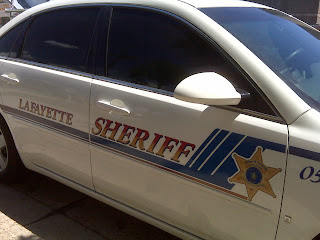Unless you've been in combat or lived in the wake of a natural disaster, chances are you might not know what an "MRE" is. Technically, it stands for Meal Ready to Eat. More accurately, I would suggest it is more along the lines of Meal Rarely Edible.
I am researching food, and here in tornado country I thought it a good idea to test out one of these emergency food packs. Also, I must say I was a bit curious. I mean, the Mysterious Reddish Experiment package even comes with its own plastic spoon, cookie, raspberry-flavored drink mix (which contains no actual raspberry), spices (a small packet of black pepper), and miracle-of-modern-science one-time-use heating mechanism. So just a couple of days ago, Aaron rejoined me in central Mississippi along the scenic (and blessedly tree-lined) Natchez Trace Parkway. As our supplies ran low and food options along the route were nonexistent (unless I wanted to take a crack at squirrel hunting or poison ivy salad), we broke out the Muck Reserved for Emergencies. Yep, I'm talking about the chicken and black beans and rice. We were starving, and the thought of yet another granola bar was less appealing than the hyper-synthetic food product. Maybe it was the southern humid heat making me delirious, but it seemed like a good idea at the time. (Michael Pollan would be horrified. At least I could pronounce most of the 17 ingredients listed on the label.)
I won't say the meal was an epic failure, but it wasn't one of my finer culinary moments. In spite of step-by-step instructions *and* diagrams, it took multiple attempts to prepare the Mush, Remotely Edible. (Yet another reason I'd never make it in the military: I'm not good with following orders. It's also probably why I am a better cook than a baker. What? Measuring? Bah.) Roughly 15 minutes after I'd stuffed the required components together, there didn't appear to be much activity going on in terms of the gruel heating up. I broke down and read through the instructions: top ripped open (with my teeth; I wasn't about to risk another incident with the multi-tool), salt water packet dumped in, packet folded over, package reinserted into cardboard box... oh... heat pellet on the *bottom*.... (Aaron helpfully pointed out that I didn't go through the requisite military training session on how to prepare these Mostly Rancid Ex-foods.)
Once I got the heating mechanism placed correctly, it was another 10 minutes or so until the Mildly Radioactive Ectoplasm was ready for consumption. As we waited for the contraption to cool to non-molten-lava temperature Aaron and I nibbled on the crackers and knead-packet-before-opening cheddar cheese product -- one of the side items in the Morphologically Re-Engineered meal.
When we actually got to eating the Magically Reconstituted Effect, I believe the consensus was "not as bad as it could be." With our salt intake for the week now taken care of, we hopped back on the bikes for the rest of the day's ride. All in all, the Mildly Repugnant Esculent fit the bill: calories not in bar form. (Though prior to heating, the foodlike substance was a Markedly Rectangular Entity....)
Sent from my Verizon Wireless BlackBerry











